Looking to plant a medicinal herb garden but not sure of where to start, which herbs are medicinal, or what you can grow in the space you have? Read on, your in the right place for planning your own medicinal herb garden!
This post may contain affiliate links at no additional cost to you. By making your purchases through the links on this website, IMSL may make a small percentage at no direct cost to you. IMSL only promotes products we use & truly believe in. Please refer to my Privacy & Disclosures for further information. IMSL thanks you for your support!
When it comes to planning & planting your own medicinal herb garden, there’s good news! It really is a simple process to plan & grow herbs well suited for medicinal use no matter where you live or what space you have available!
You don’t have to boast a “green thumb”, be a master gardener, or have vast herbal knowledge to plan & grow your own medicinal herb garden. By following these simple guidelines, you can begin planning a medicinal herb garden now, so by the time your growing season arrives, you will be ready to plant!
SHARING IS CARING & I THANK YOU FOR IT ❤️
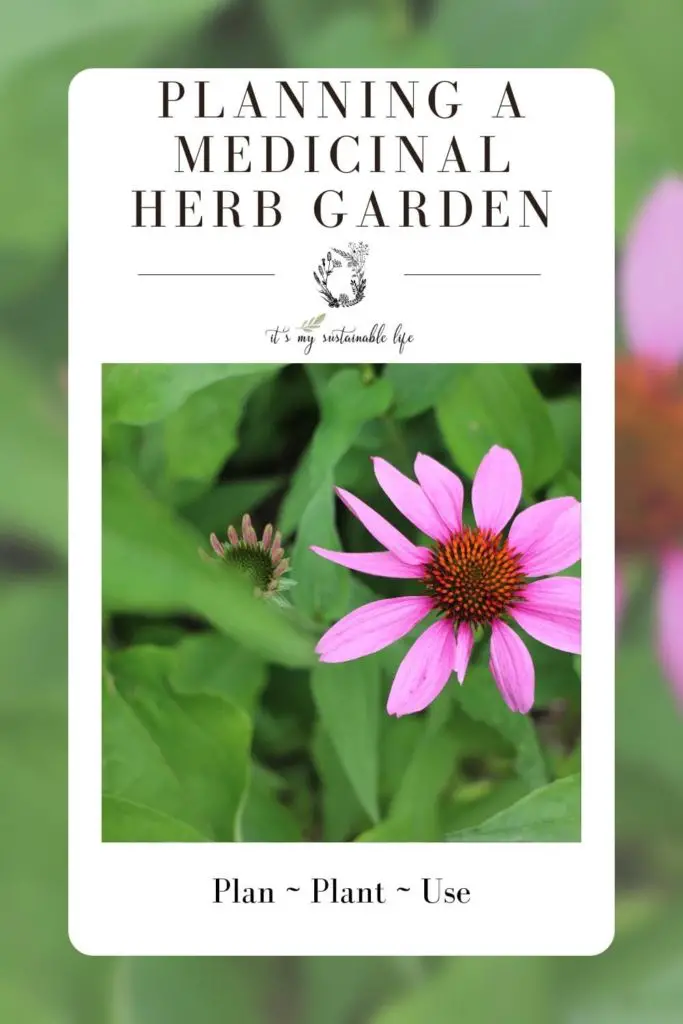
MEDICINAL HERB GARDEN DEFINED
Before we go any further, defining exactly what a medicinal herb garden is, fortunately, is pretty straightforward.
A planned medicinal herb garden is just that. A garden filled with plants, herbs, and flowers that can be utilized in home preparations for their innate healing properties.
Plants that boast curative powers for calming nerves, relieving headaches, managing seasonal viruses, joint pain, and muscle aches. Plants that are nature’s natural healers.
MEDICINAL HERB GARDENS-ANCIENT HEALING
The use of medicinal herbs date back to Prehistoric man. Cave paintings dating from 13,000 to 25,000 BC have been discovered in France displaying herbs being used. Ancient civilizations (think Aztecs, Mayans, and Egyptians) are all well-known to have utilized herbal preparations for medicinal purposes, with the first written records (written on clay tablets no less!) dating back 5,000 years ago by ancient Mesopotamia.
Now that’s healing that’s tried and true, tested, and obviously works!
WHY PLAN & PLANT YOUR OWN MEDICINAL HERB GARDEN
You get the idea. The use of medicinal herbs are old, wise, and efficacious. And only growing more widely popular today!
So many are now looking back to nature (thank you very much 😊) for cleaner, healthier options for treating various issues right from your home kitchen. Options that are free from harmful side-effects, hidden chemical exposures, and pesticides by growing their own organically.
It stands to reason that many are now looking to grow their own favorite herbs by planning and planting their own medicinal herb gardens! Largely in part to the ease of growing your own herbs and largely because it’s so affordable.
Although it may be easier to list the reasons why not to grow your own medicinal herb garden, here are a few reasons why you should consider planning & planting your own healing herbs ….
- HARDY – By planning out your own medicinal herb garden you can choose those medicinal herbs which are hardy to YOUR growing zone. Don’t know yours? Check yours with this USDA Hardiness Zone Finder
- COST – In comparison to purchasing organic herbs for use with your home remedies (click here for a few of my favorite winter herbal remedies), growing your own herbs is pennies to the dollar. Especially when you learn how to propagate your own herbs from cuttings, basically creating FREE plants, and drying herbs for future use. In addition, many herbs are hardy and considered perennial herbs (one’s that come back year-to-year)
- SUSTAINABLE – Many of the herbs you purchase travel thousands of miles to reach your apothecary cabinet. By growing your own those miles are reduced to steps outside your door. Herbs take little to no watering AND attract natural pollinators, providing them with the nectar sources they need to survive
- ADAPTABLE – By thorough planning for hardiness, light, and how & where you will be growing your herbs (containers, beds, companion plants) you can easily place your herb plants where they are best situated for healthy growth. From very little space to just a windowsill to large garden beds, herbs can easily adapt to wherever you choose to grow them
- HEALTH – Not only the herbs themselves will provide you with their healing properties, there is increasing scientific evidence that gardening is good for your overall health, both physical as well as mental health. In addition, when growing your own, growing organically is made easy & affordable
- FRESH – Homegrown herbs are bar none the freshest you can enjoy in both your herbal remedies and from scratch meals
- VARIETY – By growing your own herbal medicinal garden, the choices of WHAT herbs you grow are yours! You will be amazed at the variety you can choose from, from the common to the exotic

PLANNING A MEDICINAL HERB GARDEN
As with most new endeavors, creating success begins with a dream. A vision of what it is you would like to accomplish. And dreaming is a form of planning after all!
“Without leaps of imagination or dreaming, we lose the excitement of possibilities. Dreaming, after all is a form of planning.”
Gloria Steinem
When dreaming about your own medicinal garden, half the fun of creating one is planning one!
GARDEN MANAGEMENT PLANNER
When planning, planting, and maintaining any garden, right from the start, begin a garden management planner. You may think you will remember all the details, but I can absolutely guarantee, you won’t. Trust Me. Been there done that 😊
I have taken the guess work out of garden journaling & tracking for you by creating a 24 page, plus cover page, Garden Management Planner. These planner pages have all the printable pages you will need to keep track of any garden you start right from the beginning.
Grab your copy, you can print them over year-to-year as needed, and create your garden management binder to plan, track, and manage every aspect of your gardening adventures. You will be glad you did.
SIMPLE GARDEN HERBS OR POWERFUL HEALING TOOLS
Even if you are just beginning to explore the world of herbs and their healing properties & potential, you still have some basic knowledge. After all, kitchens are generally stocked with the basics: basil, thyme, garlic etc. Typically for use in making from scratch meals.
These same kitchen staples are also powerful healing tools! Through research, experience, and yes, even a few experiments, you will soon be well on your way to growing and using your homegrown herbs straight from your own medicinal garden in many herbal preparations!

MEDICINAL HERB GARDEN CONSIDERATIONS
A few things to consider when planning a medicinal herb garden …
- SIMPLE – First and foremost, keep it simple. Recognize your gardening limitations. Are you brand new to gardening or have some previous experience? Keep it to a size which you can easily manage and then grow from there.
- USES – Understand what it is you are hoping to accomplish with your medicinal herb garden. Are you looking to make specific herbal remedies, salves and balms, or to stock your culinary cabinet. Which herbs and remedies do you already use? By understanding your wants and needs first will aid you in the planning stages of your garden
- LOCATION – Determine where you will be growing your healing garden. Will you be growing your herbs indoors or outdoors, or both? In pots or vertical gardening may be an option when short on space. Will they be used as companion plants alongside vegetables and flowers?
- DESIGN – When growing your medicinal herb garden outdoors, design can play a major role in your planning. What type of garden beds if any will you be using? Do you enjoy a tidy, neatly organized garden or tend to be on the wild side of things? Will you be adding your herbs amongst existing garden beds only or creating an entirely new designed garden space?
- LIGHT – Once you have your location, determine what kind of light this area receives. As a rule of thumb full sun is equal to 6+ hours of direct sunlight each day, part sun (often referred as part shade) receives 3-6 hours of direct sunlight, and shade refers to area’s which receive only filtered, dappled, or indirect sunlight throughout the day. Light may be one of the largest mistakes made when trying to grow herbs. Don’t think an herb plant which is grown in full Mediterranean type sunlight will grow and thrive in full shade
- WATER – Understanding your herb’s watering needs right from the get-go will save a lot of unhappy plants later on. Obviously, when in the designing stages understanding the plants growth habit will determine which plants can grow and thrive alongside one another and which cannot. As with most gardening endeavors, mimicking the plants growing conditions to that which nature would provide will keep them happy for sure.
- SOIL – Most Mediterranean herbs will live a happy existence when provided with like soil conditions. And that means warm soil. Trying to grow a heat loving herb such as lavender in a mountainous region where nightly temperatures remain low may be a losing battle. That being said, herbs typically don’t require extensive care, but all plants enjoy healthy roots, and that means healthy soil that show’s signs of plant growth, moisture, and earthworm activity
- PLANTS OR SEEDS – Deciding how you will be obtaining the herb plants which will ultimately make up your medicinal garden comes down to cost and availability. Growing your own from seed is by far the most economical way to start your herb garden. Seeds sourced through companies such as Mountain Rose Herbs remain a cost effective way to start your herbs. Realize that herbs have a slow germination rate, taking up to 3 weeks plus for some to even begin showing signs of life. Should you not be prepared to grow your own herbs from seed, purchasing seedlings (plants that have been germinated and grown for you) means you can plant them directly. They are, however, more expensive, hard to find organically grown and offer little variety. OR, if you are fortunate to have a friend with an herb garden, see if they are willing to propagate or share a few herb cuttings with you

As with any type of medicinal herbal uses, caution needs to be made. Before beginning any herbal remedy, program, or product, do your due diligence. Research thoroughly and when in doubt, consult with your Primary Care Physician.
DISCLAIMER
Recommendations and or suggestions made by this blog regarding husbandry and or herbal remedies etc. are not meant to replace solid advice from qualified professionals. None of the information on this blog has been evaluated by the FDA. Products or remedies mentioned are not intended to diagnose, treat, cure or prevent disease. Please do your due diligence. Research, talk to qualified professionals and proceed at your own risk.
MEDICINAL HERB GARDEN MUST HAVES
When it comes to which herbs you should plan on planting in your medicinal herb garden, these powerful herb suggestions should have you covered.
The following list of medicinal herbs for your garden are in no particular order, but all are favorites here on the hill.
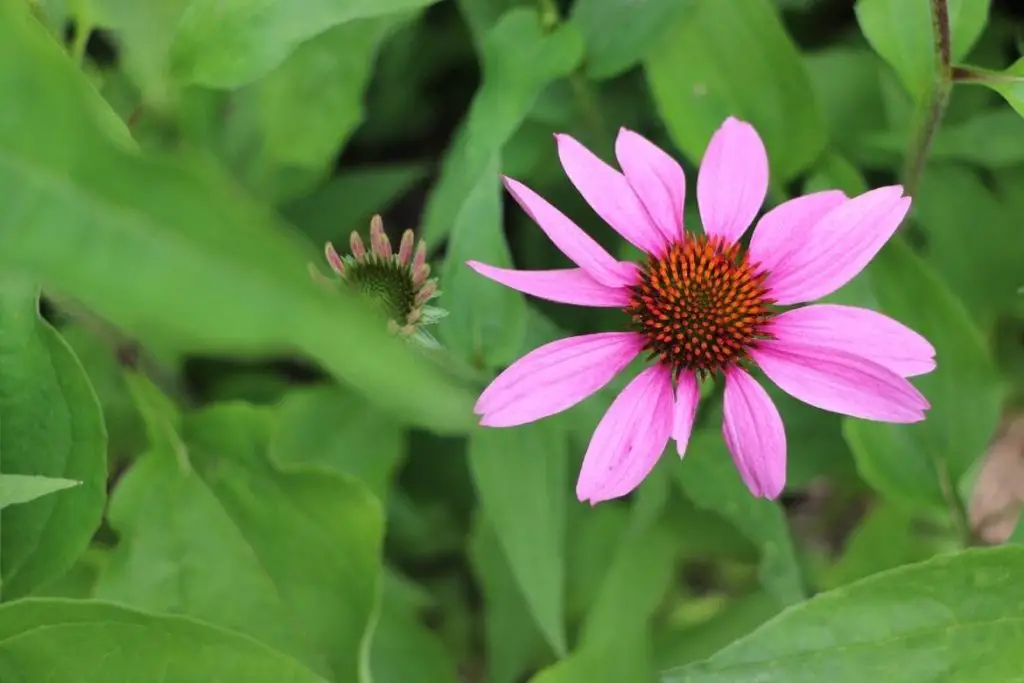
Echinacea
Echinacea purpurea
Common Name: Purple Coneflower
Hardiness: USDA Garden Zones 4-9
GENERAL: Echinacea, aka purple coneflower, a perennial plant that is commonly found throughout North America. A Native American medicinal plant, its name referencing the large conical seed center resembling the spines of an angry hedgehog. Echinos being Greek for hedgehog.
SUN REQUIREMENTS: Full to Part Sun
MEDICINAL USES: Used throughout millennia for immune stimulation, echinacea also has been known to aid with inflamed hemorrhoids, relieve pain, reduce inflammation and is known to possess antiviral and antioxidant properties.
CULINARY USES: No known uses.
GENERAL: This genus of 15 to 20 species of both annual and perennial herbaceous plants are in the daisy family, Asteraceae. Often referred to as pot marigolds, calendula is native to southwestern Asia, western Europe, and the Mediterranean. Although this plant is considered an annual in gardening zones 2-11, should you reside in gardening zones 9-11 it may be perennial.
SUN REQUIREMENTS: Full to Part Sun
MEDICINAL USES: Flowers and petals are used in antiseptic tinctures to ease gastrointestinal issues as well as promoting oral health, made into a tea is especially efficacious for menstrual issue’s, and infused oils to create healing skin ointments and balms.
CULINARY USES: The flower petals are edible but refrain from eating the calyx or flower center.
GENERAL: Garden parsley has been widely cultivated as an herb. Native to the Mediterranean and parts of Europe, common parsley is known in both flat-leafed and curly leaf forms. This intensely flavored herb is used in European, Middle Eastern, & American cuisines.
SUN REQUIREMENTS: Full
MEDICINAL USES: The leaf, seed, and root are used for medicinal preparations. High in vitamins C, A, and K, parsley is a strong supportive herb for heart health and healthy bones to name just a few. Studies are now indicating that parsley is a “useful and important medicinal plant with wide range of proven medicinal activity”.
CULINARY USES: In addition to being used as a garnish, parsley makes for a wonderful addition to soups, marinades and dressings, fresh salads, fish dishes, and even tomato sauces.
GENERAL: Native to Central Asia, garlic is a well known culinary herb whose close relatives are onion, shallot, chive, and leek. The word itself, derived from an Old English word which translates to roughly “spear-shaped leek”. Garlic is a perennial flowering plant grown from a bulb. It’s the bulb itself which is widely utilized in both the medicinal & culinary cabinets alike.
SUN REQUIREMENTS: Full
MEDICINAL USES: When the Greek physician, Hippocrates, stated “Let food be thy medicine, and medicine thy food”, he was surely referring to garlic. Largely supported by the scientific community, garlic’s sulfur compounds (allicin, diallyl disulfide, and s-allyl cysteine) are where its benefits lay. Not to belittle its many nutrients (manganese, Vit B6, Vit C, Selenium, and fiber) along with decent amounts of calcium, copper, potassium, phosphorus, and iron. No wonder garlic is just that. A wonder when reducing colds severity and other viruses. One of our favorite home remedies utilizing garlic is our Honey Fermented Garlic. If you’ve never tried this, it’s a must. When looking to reduce blood pressure, improve cholesterol levels and even lower risk of heart disease, garlic may be your go to herb.
CULINARY USES: We may use a clove or two of garlic in just about every savory meal we make here on the hill. There’s nothing that compares to the full flavor of garlic.
GENERAL: Thyme, an evergreen herb from the mint family Lamiaceae, is a close relative to oregano. This multi-purpose herb (medicinal, ornamental, culinary) is native to the Mediterranean region. Used throughout history for embalming (Egyptians), incense burning (Greeks), purification (Europeans), and even used to keep bad dreams at bay and given to warriors for courage (Middle Age Europe).
SUN REQUIREMENTS: Full sun to Part Sun.
Note: Should you live in very hot climates, thyme will need part shade to thrive
MEDICINAL USES: Thyme’s medicinal value’s are due largely to thymol (volatile oil), carvacrol, linalool, alpha-terpineol, and cineole, some of which display antioxidant properties. Thyme boasts anti-bacterial & anti-microbial properties. Popular uses of thyme include aiding issues with bronchitis, sore throat, coughs, upset stomach & gastrointestinal issues, and oral health.
CULINARY USES: Cooks of all levels of expertise enjoy utilizing this fragrant herb in their savory dishes. Fresh or dried, thyme is a lovely accompaniment to many foods.
GENERAL: Like most herbs, stinging nettle, aka nettle, has its roots steeped deeply in history. Records of its use date as far back as the Bronze Age (3000 BCE – 2000 BCE) to present. Nettle was used to make textiles in Scottish homes during the 16th/17th century, the First And Second Wars substituted nettle for cotton yarns. Nettle, often referred to as “stinging nettle” is due to the “trichomes” or hollow hairs on its leaves and stems, which relate closely to needles that sting when touched. Nettle is a perennial plant that spreads easily and fast. Should you grow your own in lieu of foraging, take care and plant in a location that allows it to do so.
SUN REQUIREMENTS: Full Sun to Part Sun
MEDICINAL USES: Nettle may be one of the most versatile herbs we can use and is highly valuable in any healing cabinet. Nettles arial parts (leaves/seeds) and roots are used. Used largely for assistance with anemia, as a nutritive and detoxing herb, for skin infections, throat and mouth issues, urinary and kidney issues, and arthritis/joint pain.
CULINARY USES: Nettle is highly nutritious (one cup = 37 calories, 2g protein, 6g fiber, Vit A, Iron, and 42% calcium requirements). Used as any other green, nettle loses its sting when cooked. Used as a tea, herbalists utilize herbal infusions of nettle as one of the best overall health and wellness infusions available.
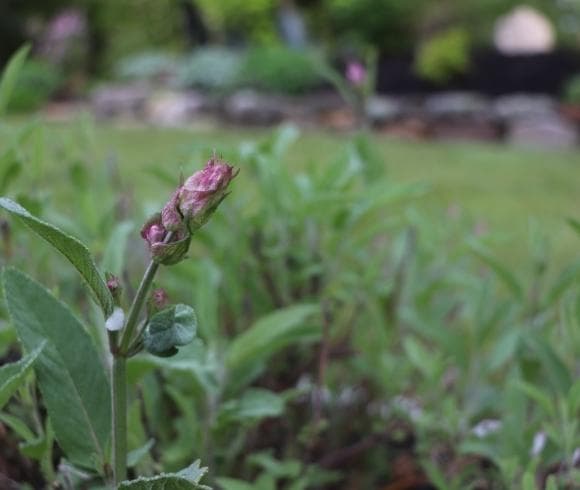
Sage
Salvia officinalis
Salvia officinalis
Common Name: Common/Garden Sage
Hardiness: USDA Garden Zones 5-8
GENERAL: Another perennial, evergreen herb originating from the Mediterranean which has been naturalized throughout the world. Sage (white sage) is best known for smudging cleanses, referred by the Romans as the “holy herb”. Sage is the largest member of the Lamiacea (mint) family.
SUN REQUIREMENTS: Full
MEDICINAL USES: Studies are now being conducted which suggests that this grounding herb is efficacious when used as a tea for “the treatment of digestive and circulation disturbances, bronchitis, cough, asthma, angina, mouth and throat inflammations, depression, excessive sweating, skin diseases, and many other diseases”. One of our favorite herbal oxymel recipes is made using sage and taken immediately with any onset seasonal virus indications.
CULINARY USES: Garden sage is often used in the making of tea, cocktails, sauces, butters, meat marinades, breads, and even fried.
GENERAL: Lavender, one of 47 flowering plants in the mint family, has long been put to use largely in part due to it aromatherapy benefits. Today it’s not uncommon to find lavender in your favorite ice cream flavor, infused honey, or even a unique cocktail.
SUN REQUIREMENTS: Full Sun
MEDICINAL USES: In a nutshell, lavender is much more than just a pretty aromatic flower. “Lavender’s anti-inflammatory, antibacterial, anti-fungal, as well as antioxidant properties (now being proven scientifically) have been shown to ease pain & “have a variety of therapeutic and curative properties, ranging from inducing relaxation to treating parasitic infections, burns, insect bites, muscle soreness, and spasms. There is growing evidence suggesting that lavender oil may be an effective medicament in treatment of several neurological disorders””. This being taken from our Lavender Oil tutorial.
CULINARY USES: Used widely today in some very unique culinary adventures, lavender makes a great flavor to homemade crackers, infused honey, desserts, drinks, marinades, and salads. Use lavender similarly as you would rosemary.
GENERAL: The edible fruit or seed pod of the rose flower which has been left to mature on the stem of the rose bush. Used since ancient time both medicinally and in culinary dishes & drinks. Ancient Romans believed rose hips would cure rabies, thus its Latin name.
SUN REQUIREMENTS: Full
MEDICINAL USES: Commonly used in the making of rose hip tea, rose hips are full of antioxidants & flavonoids, high in vitamins B, C, and E as well as other nutrients and have long been foraged & used for ailments stemming from seasonal viruses and ….
- Rheumatoid Arthritis
- Knee & Hip Osteoarthritis
- Aid The Immune System With Cellular Issues
- Balance Fat Metabolism
- Protect Tissues From Free Radical Damage
- Scurvy
- Aids With Adrenal Function
- Prevent Urinary Bladder Infections
- Constipation
- Skin Nourishing
- Menstruation Issues
CULINARY USES: As mentioned, rose hip tea is very common, but rose hips are certainly not limited to just tea. Prepared rose hips (hairs removed) are used in jams, jellies, syrup, soups, & wine.
GENERAL: A flowering North American herb, goldenrod has been the blame for many an allergy as it’s often confused with ragweed which blooms the same time. Goldenrod’s been used and treasured as an herbal remedy dating back to ancient Egyptian time. Symbolizing health, prosperity, and happiness, it’s no wonder that this sunny flowering herb has been used in many a wedding, celebrating new beginnings. Its genus name is derived from the Latin word “Solido” which translates “to heal”.
SUN REQUIREMENTS: Full Sun
MEDICINAL USES: All parts of goldenrod are used. Largely used for urinary issues, muscle pain, and respiratory issues, goldenrod can be made into infused oils, tinctures, infused honey, and tea’s. Goldenrod’s plant compounds (saponins, flavonoids) provide its antifungal, antioxidant, and anti-inflammatory functions.
CULINARY USES: As mentioned, goldenrod is often used in tea making, and offers a multitude of nutrients when flowers are utilized in salads, cooked as you would spinach, added to soups & stews. While in bloom, forage & harvest, blanch, freeze, and have at the ready for winter meals.
GENERAL: Borage, grows fairly well in most any garden. Both the leaves and the flower itself are edible, and is commercially grown for making borage seed oil. Used widely as a companion plant, borage is said to protect & assist legumes, spinach, brassicas, and even strawberries. What interests most, however, is its ability to confuse the dreaded hornworms mother moth when planted near tomato plants.
SUN REQUIREMENTS: Full Sun *but can tolerate Part Sun
MEDICINAL USES: Borage flowers and leaves are utilized for treatment of fever, cough, and depression. Borage seed oil (fatty acid GLA) is used for many ailments including dry itchy skin ailments, arthritis, inflammatory pain issues, and skin care products.
CULINARY USES: Used as one would a vegetable, borage, a crunchy taste likened to cucumber, is often added to soups, salads, as flavoring in pickling, infused honey, garnishes, tea, and cocktails.
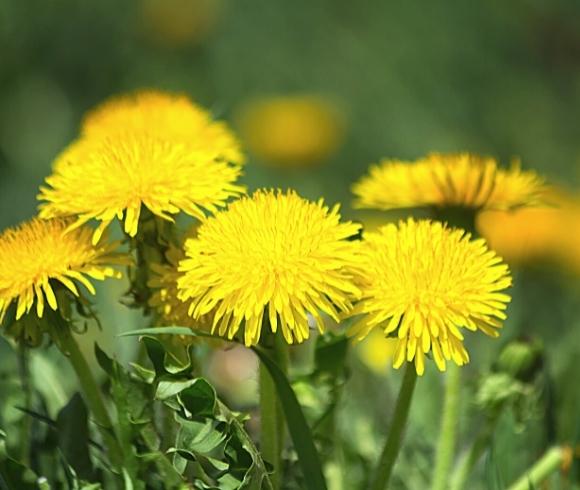
Dandelion
Taraxacum officinale
Common Name: Dandelion, Wishing Flower
Hardiness: USDA Garden Zones 3-9
GENERAL: Dandelion, part of the large Asteraceae plant family, is native to Eurasia and North America, but now grow wildly throughout the world. Thought to date back 30 million years, fossil seeds have been recorded from southern Russia. One of the largest first nectar sources of food for native pollinators, dandelion is sadly viewed by many as a weed and treated as such.
SUN REQUIREMENTS: Full Sun but can tolerate lower light
MEDICINAL USES: Potent antioxidants & anti-inflammatory properties have been linked to boosting the immune system, lowering blood pressure, and reduce cholesterol levels. “Dandelion is used widely for everything from detoxification & cleansing the blood to treating common ailments such as loss of appetite, headaches, and weight loss, to name just a few. The oil made from the dandelion flower (an infusion) is known for its pain relieving qualities (anodyne) as well as it’s moisturizing (emollient) benefits.”
CULINARY USES: All parts of the dandelion plant are edible. High in Vitamins A, K as well as calcium and iron, dandelions nutritive and medicinal properties have been utilized throughout time. Especially as a spring liver cleanse. The flowers and petals are used in making dandelion wine, roasted roots as a coffee substitute, and a key ingredient in the making of root beer. Used in salads, cooked as you would any other green, used as a lettuce substitute, dandelions are one thing; delicious.
GENERAL: Mullein, aka, flannel leaf, is a herbaceous biennial (flowering every 2 years) plant from the Scrophulariaceae family. Dating over 2,000 years ago, mulleins beneficial attributes have been widely utilized extensively throughout European and North American folk medicine. Everything from utilizing leaf ash for darkening hair & using the yellow flowers for lightening it, to creating wicks for candles & torches.
SUN REQUIREMENTS: Full Sun
MEDICINAL USES: Widely used by Native Americans as poultice for cuts, the root was made into necklaces and used by teething babies, and the leaves were rubbed on the body during sweat cleanses, mullein today is utilized still as a soothing tea, and ear oil. An effective demulcent, nervine, and diurectic, mulleins uses range from coughs, virus treatment, fever, and allergies.
GENERAL: Juniper, part of the cypress family, Cupressaceae, are a coniferous tree or shrub found throughout the world. It’s the female fleshy, fruit-like cones that make up the Juniper Berry. Used throughout history as folk remedies, wood building, cleanses & blessings, juniper is largely ornamental in landscaping today.
SUN REQUIREMENTS: Full sun to Partial Sun
MEDICINAL USES: Here on the hill, foraged juniper is put to good use in our healing cabinet. Used for treatment of urinary issues, stress-relief, for its anti-inflammatory benefits (arthritis/joint/muscle pain reduction), skin issues, and relief for congestion and gastrointestinal issues, juniper is one herb we collect every fall & winter.
CULINARY USES: A known appetite stimulant, juniper adds a distinct flavor to infused vodka (homemade gin anyone?), BBQ’s, and a wide variety of game meats.
These are just a few of the favorite herbs used in our medicinal herb garden. Need a bit more inspiration? Here you go …
- OREGANO – A mint family member, this herb is both delicious and efficacious. Classic to Italian and Greek cuisine, you will often find oregano in your favorite sauce. An herb with antiseptic & anti-inflammatory properties, oregano is used to treat ailments ranging from acne & rosacea to wounds & athlete’s foot
- ROSEMARY – In addition to adding strong flavor and scent to chicken, beef, and sauces, rosemary boasts anti-microbial & anti-inflammatory properties which help boost the immune system, improve circulation, improve mental clarity, and enhance memory function
- BERGAMOT – Often utilized in tea, this dainty flower packs a powerful medicinal punch. Used for aiding colds & seasonal viruses, lowering fevers, aids digestion, nausea & vomiting, bergamot can be applied externally as well to treat skin eruptions
- GINGER – Although really a spice, ginger is commonly used like an herb. Chinese medicine has utilized ginger for treating digestive issues such as nausea. Used in our traditional Fire Cider recipe, gingeroles found in ginger are put to good use as a powerful preventative & aid
- CHAMOMILE – This happy herb’s claim to fame is tea often used for its calming & soothing effects. However, it offers so much more. “Chamomile preparations are commonly used for many human ailments such as hay fever, inflammation, muscle spasms, menstrual disorders, insomnia, ulcers, wounds, gastrointestinal disorders, rheumatic pain, and hemorrhoids.”
- FEVERFEW – Largely known for treating fevers, feverfew also assists with migraines, RA, toothaches, menstrual & digestive issues
Hopefully, this has offered inspiration for growing your own medicinal herb garden! Like with most things in life, a well laid plan leads to success.
Will you be planning a medicinal herb garden of your own?
Love, Light, & Laughter ~

Enjoy this article? Please consider sharing it on your favorite social media channel! Want more? Subscribe below for the occasional update with all the “happenings on the hill”!

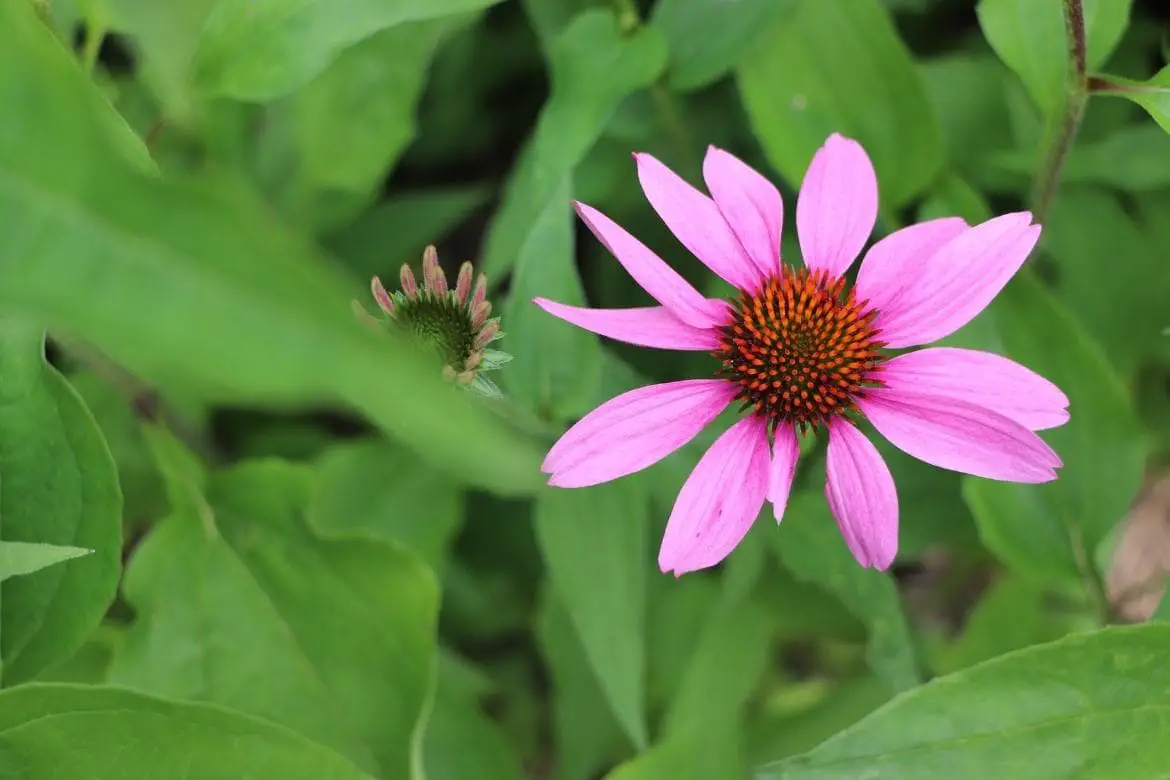
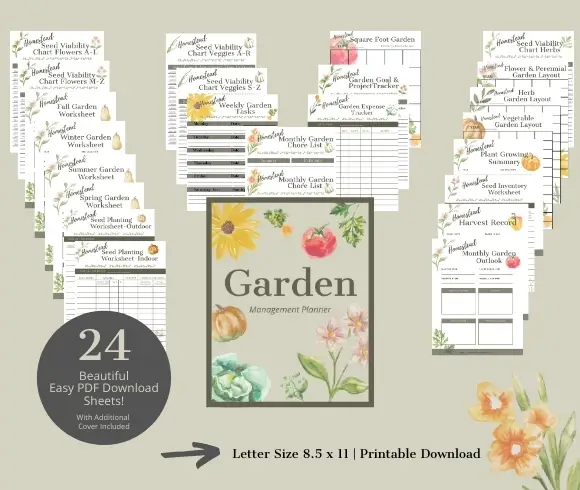
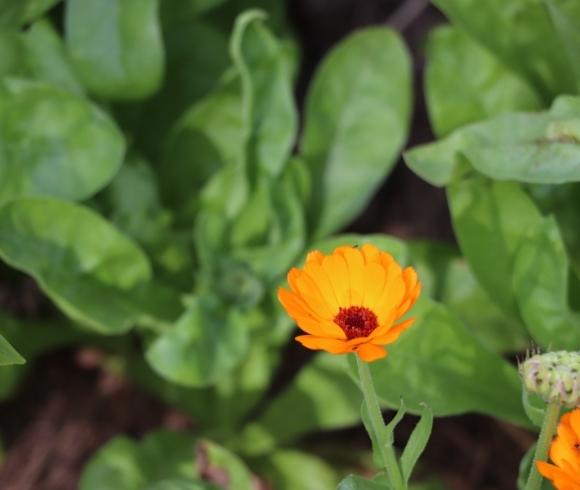
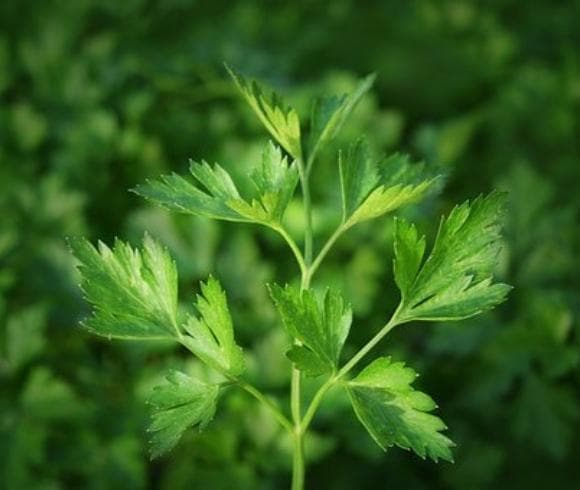
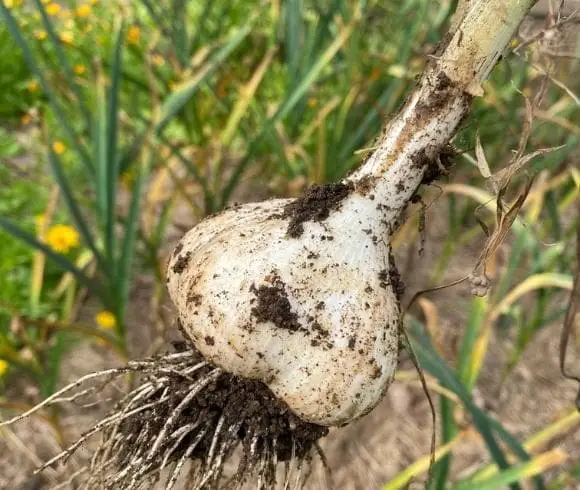
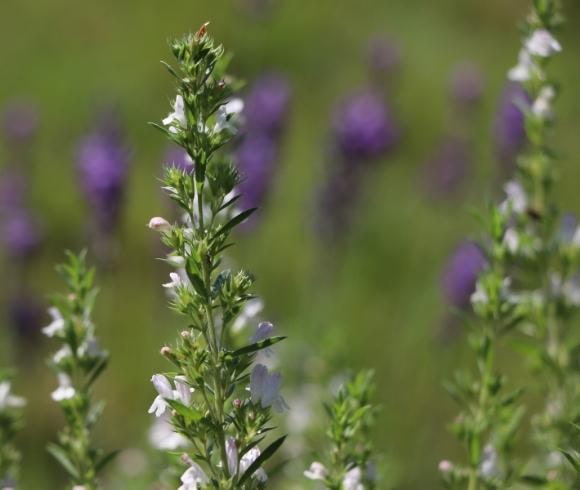
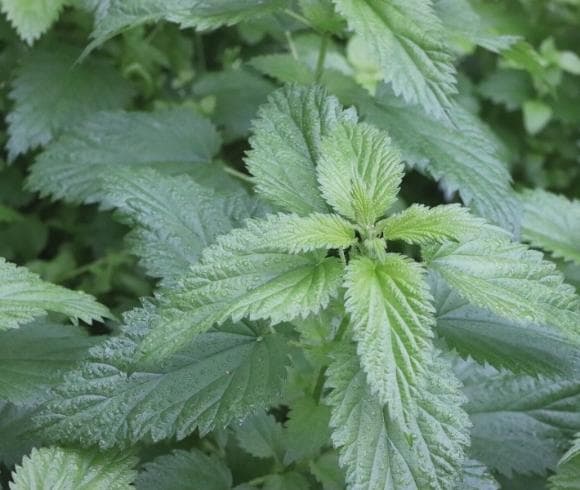
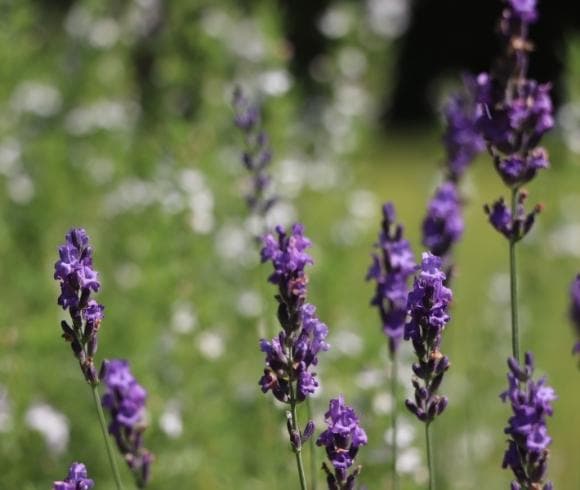
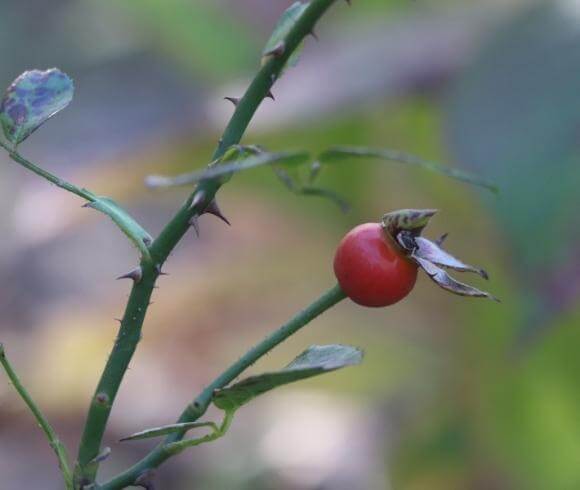
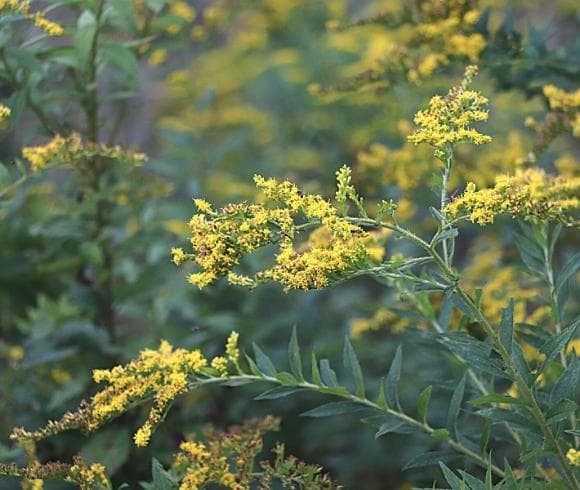
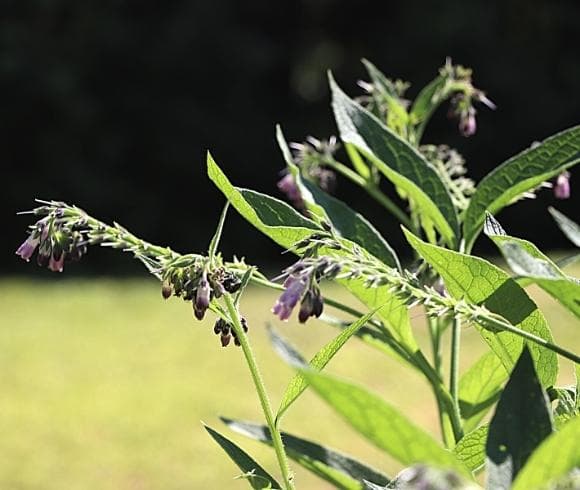
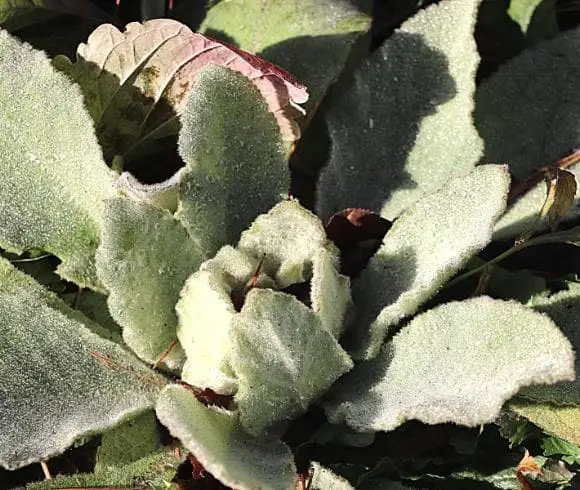
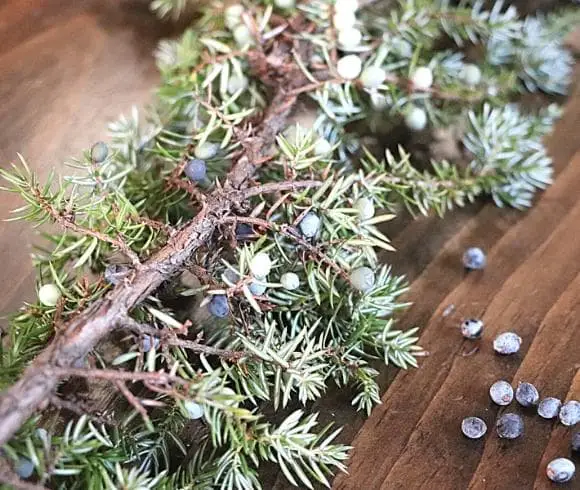
19 comments
Great post! I enjoyed reading this and I am by no means a gardener…this, however, sounds like something very cool I might be able to do!
I always find it interesting to learn what herbs can help with. Great lists!
Unfortunately for me, I seem to have a black thumb. I have done pretty well with some herbs. I can’t wait to get back to gardening.
This is such a great idea! I am interested!
Perfect guide to a medicinal herb garden! I call mine an apothecary garden and have most of the herbs you list. I LOVE my garden.
I miss my herb garden, I had a lot of those plants. It was so nice to be able to walk outside and get the fresh herbs I wanted or needed.
I love this SO much. I’ve never thought of growing nettles… we can find it so easily here in the Pacific Northwest. We are deeply involved in the Native American community here and my kids have learned a lot over the years about use of plants, etc.
Fortunately, I’ve been able to harness where the nettle is growing and don’t have to deal with it 😅. Love that the kids are learning and from such great sources!
Thanks for reading, Karla ~
There is so much great information and detail here! I grow many of these myself!
I was surprised at how many of these I had never heard of! This year I’m going to try lavender from seeds.
I had no idea there were medicinal uses for juniper. That’s awesome. And I LOVE your idea of a medicinal garden. I have been considering an herb garden, but have wanted something more healing. This is great! And I love the look of some of these plants, so I’m considering adding some of these to my plans for a meditation garden.
Thank you for this wealth of information. The older I get the more I lean towards herbs for healing rather than prescriptions. However, I have no desire or even the possibility of making a garden inside or out.
Happily these herbs are available through reliable sources. My favorite being Mountain Rose Herbs!
This is a great in-depth guide for this newbie. I would love to start a medicinal herb garden. Know I think that I can. Thanks for sharing.
Wow! Love your blog post. This was very informative for us as we are getting ready to create our family garden this Spring. I’d love to add a few medicinal herbs.
I use medicinal teas on an almost daily basis. I love the idea of growing my own, because they can get expensive! If I were to make my own, could I just grow the plants, cut off leaves, dry them out, and then make my own lose leaf tea? Could it really be that easy?
Hi Alicia~
Yes it’s really that simple! For more info on ways to dry your herbs, be sure to check out 13 Ways To Preserve Fresh Herbs!
This is such a great guide with so many helpful tips for planting a medicinal garden! Thanks for the tips!
A wonderful list and guide! And I love that you sell a gardening organization journal in your Etsy shop. We’re featuring this on the Homestead Blog Hop this Wednesday. Thanks for sharing.